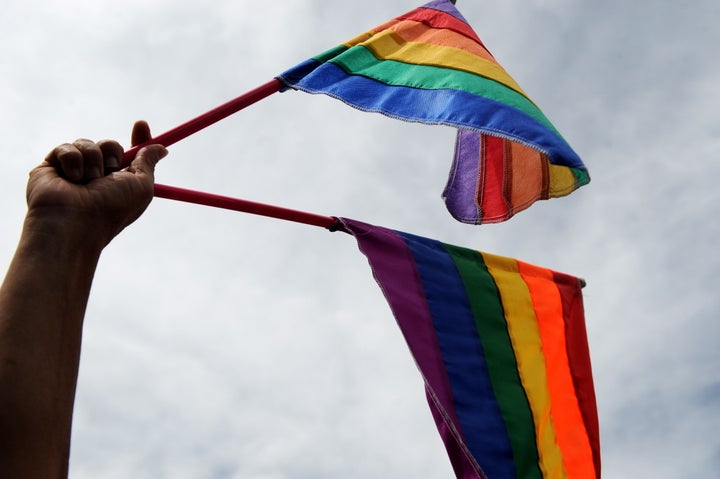
A special Gallup poll just released its findings on LGBT Americans. Though the poll is very unique in that it's the first to reach so many people (120,000 were surveyed) and ask questions regarding LGBT identity, there are some major flaws. Any gay person who hears the survey's finding that 3.4 percent of U.S. adults identify as lesbian, gay, bisexual or transgender will surely roll their eyes. Even the 10-percent figure that has been floated for the past couple decades, rooted in Kinsey's studies on sexuality, seems low, so how could 3.4 percent be more accurate? When you dig a little deeper and look at the survey's methodology, it's easy to see how that number might be sorely miscalculated.
Firstly, the data was compiled via phone calls. Strangers called people's homes across the country and asked them point-blank, "Are you gay?" and, "How much money do you make?" I don't know about you, but I'm a super out-and-about lesbian living in New York City. I've marched in the streets and fought as an activist and am proud to call myself a big dyke to anyone who's around to listen, but if some stranger called me on the phone from some undisclosed location in a possibly homophobic town, I sure as hell might lie about any questions I'm asked, including my sexual identify and income.
The survey also asserts that there are more LGBT Americans of color than white LGBT Americans and more LGBT women than LGBT men, and that LGBT people have lower education and income than their straight brothers and sisters. This goes against previous market research, which has suggested (perhaps erroneously) that LGBT folks are well-educated, affluent and big spenders compared with their heterosexual counterparts. But again, think about who might be sharing information. The stereotypical rich, white gay man, who is likely in a position of power in the workforce, is probably less likely than others to freely disclose to a faceless voice on the other end of the phone his sexual identity.
The poll also leaves out many nuances of the gender-variant rainbow. There are plenty of people who are not straight and would probably admit to that if they were given more choices than "lesbian," "gay," "bisexual" and "transgender." Perhaps the question should have been, "Are you not straight?"
It's great that Gallup invested resources in better quantifying and qualifying the LGBT community in America (we'll take the visibility from accredited institutions however we can), but we stand to lose valuable footing if we're sorely underrepresented. Imagine how the number "3.4 percent" plays in the heads of Congress or the Supreme Court when it comes to equal rights, compared with, say, 10 percent, 22 percent or, hey, even 34 percent.
Don't you have a "straight" friend whom you dragged to a gay bar and who ended up having a little fun after a few too many rounds? I'd argue that the number is likely closer to 50 percent!
